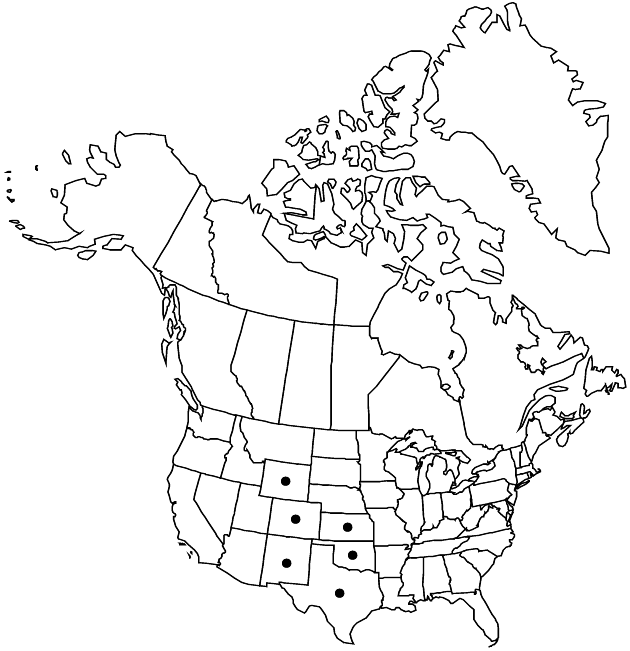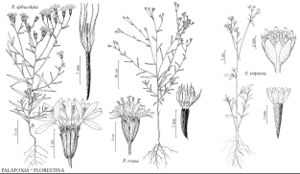Palafoxia rosea
Rhodora 48: 86. 1946.
Annuals, 10–50 cm. Stems scabrous to glabrate, not stipitate-glandular. Leaf blades linear-lanceolate, 30–60 × 2–6(–10) mm. Involucres ± turbinate. Phyllaries 5–10 × 1–2.5 mm, ± equal, usually scabrellous and stipitate-glandular. Ray florets 0. Disc florets 5–30; corollas actinomorphic, 7–10 mm, throats ± funnelform, shorter than lobes. Cypselae 5–8 mm; pappus scales of inner cypselae (1.5–)3–8 mm. 2n = 20.
Phenology: Flowering spring–fall.
Habitat: Sandy soils
Elevation: 100–1500 m
Distribution

Colo., Kans., N.Mex., Okla., Tex., Wyo.
Discussion
Plants of Palafoxia rosea with phyllaries 7–10 (versus 5–7) mm and pappus scales 3–8 (versus 1–3) mm have been treated as var. macrolepis. Some specimens are not readily assignable to either variety, and some are not readily assignable to either P. rosea or P. texana. Other specimens referred here to P. rosea closely resemble P. callosa.
Selected References
None.
